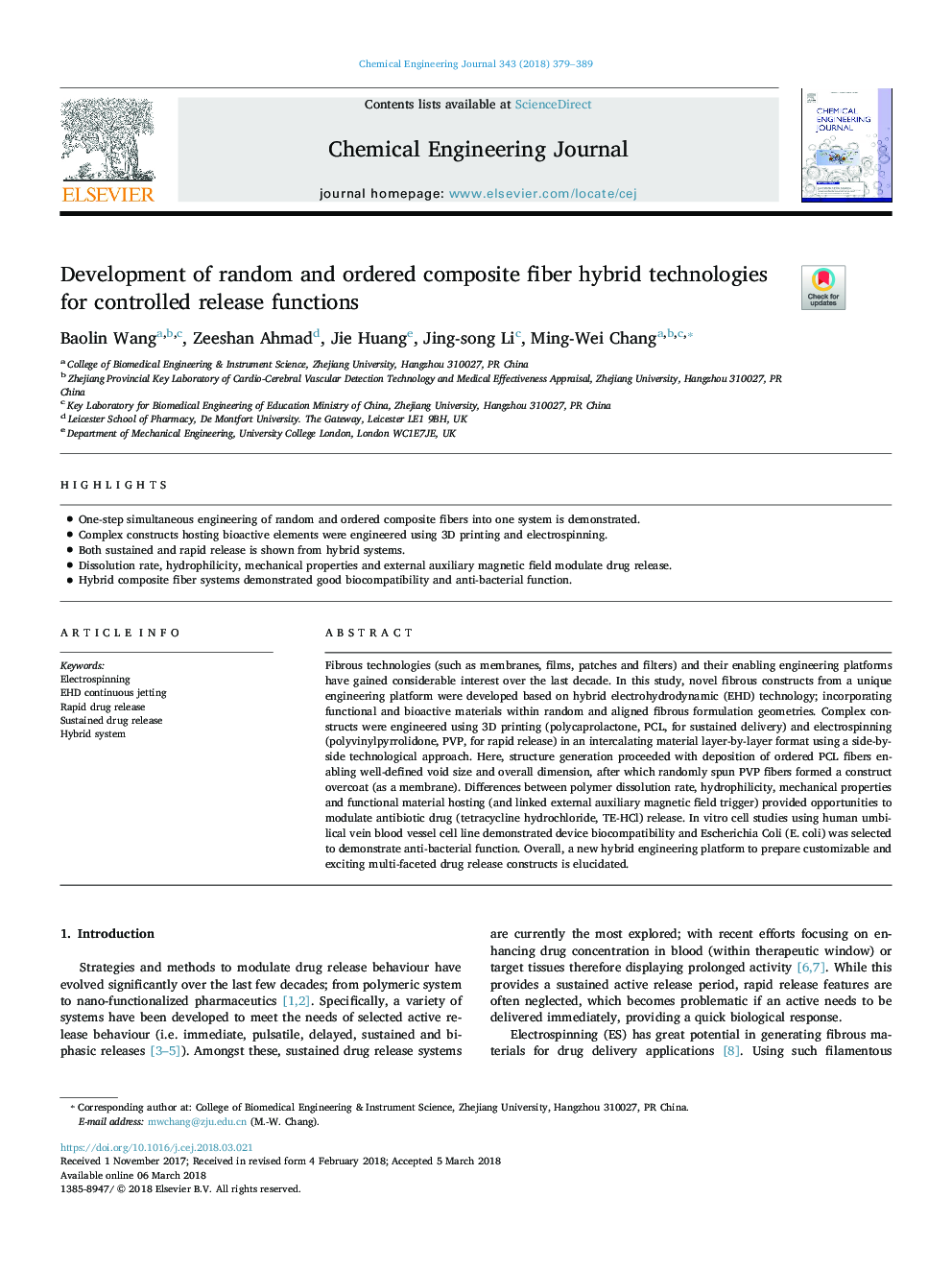| Article ID | Journal | Published Year | Pages | File Type |
|---|---|---|---|---|
| 6579873 | Chemical Engineering Journal | 2018 | 11 Pages |
Abstract
Fibrous technologies (such as membranes, films, patches and filters) and their enabling engineering platforms have gained considerable interest over the last decade. In this study, novel fibrous constructs from a unique engineering platform were developed based on hybrid electrohydrodynamic (EHD) technology; incorporating functional and bioactive materials within random and aligned fibrous formulation geometries. Complex constructs were engineered using 3D printing (polycaprolactone, PCL, for sustained delivery) and electrospinning (polyvinylpyrrolidone, PVP, for rapid release) in an intercalating material layer-by-layer format using a side-by-side technological approach. Here, structure generation proceeded with deposition of ordered PCL fibers enabling well-defined void size and overall dimension, after which randomly spun PVP fibers formed a construct overcoat (as a membrane). Differences between polymer dissolution rate, hydrophilicity, mechanical properties and functional material hosting (and linked external auxiliary magnetic field trigger) provided opportunities to modulate antibiotic drug (tetracycline hydrochloride, TE-HCl) release. In vitro cell studies using human umbilical vein blood vessel cell line demonstrated device biocompatibility and Escherichia Coli (E. coli) was selected to demonstrate anti-bacterial function. Overall, a new hybrid engineering platform to prepare customizable and exciting multi-faceted drug release constructs is elucidated.
Related Topics
Physical Sciences and Engineering
Chemical Engineering
Chemical Engineering (General)
Authors
Baolin Wang, Zeeshan Ahmad, Jie Huang, Jing-song Li, Ming-Wei Chang,
